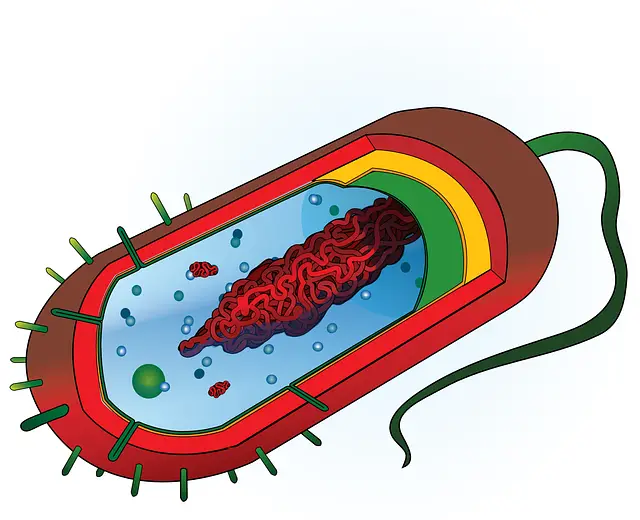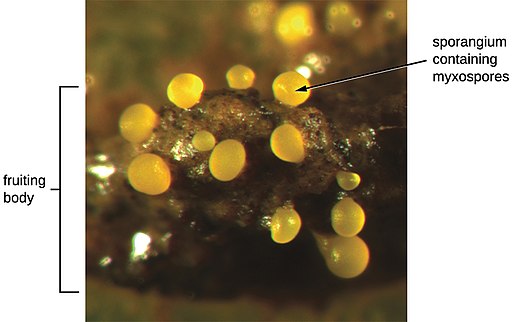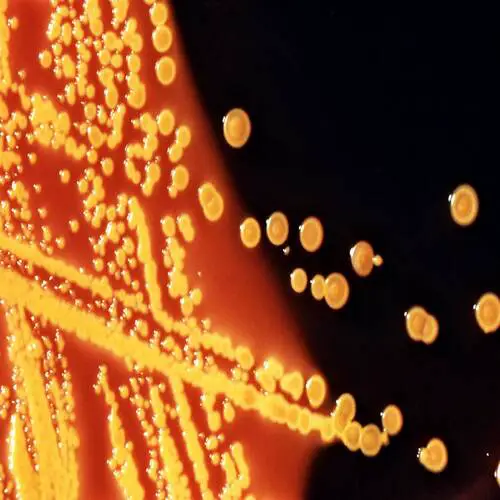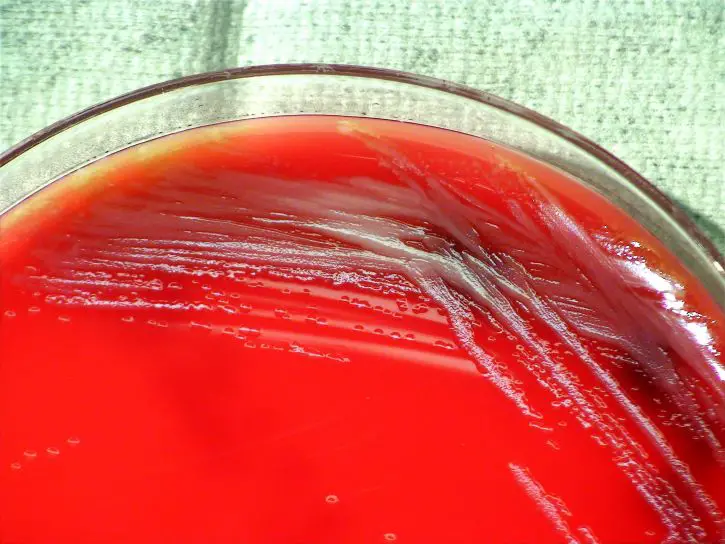Cytoplasm
Definition, Function, Structure and Location
Definition: What is the Cytoplasm?
In cell biology, the cytoplasm is a highly viscous (gel-like) substance enclosed within the cell membrane. It's composed of water (about 85 percent), proteins (10 to 15%), lipids (2 to 4%), nucleic acids, inorganic salts and polysaccharides in smaller amounts.
Depending on the cell, cytoplasm may also contain occasional granules of inclusions (e.g. stored nutrients and pigments, etc).
Apart from the cell membrane, which encloses all cell components, a majority of cell organelles (ribosome, Golgi apparatus, Endoplasmic Reticulum, etc) are located in the cytoplasm. For this reason, most of the metabolic activities occur within the cytoplasm.
* Organelles are also part of the cytoplasm.
* The cytoplasm makes up nine-tenths of the entire cell.
Some of the other functions of the cytoplasm include:
- Maintain the shape of a cell
- Cell movement
- Material exchange
Recent discoveries regarding the cytoplasm:
· Depending on the activity, bacterial cytoplasm can display glass-like properties.
· Yolk segregation from the cytoplasm in fish embryo is crucial for the development of fish larva.
· The "atypical centriole" in the cytoplasm has been associated with infertility, birth defects, and miscarriages.
· Different cell organelles have a different "feel" or experience in the cytoplasm.
Location
As previously mentioned, the cytoplasm is enclosed within the cell membrane as is the case with the other cell components/organelles. With regards to the specific location, however, this is dependent on the type of cell.
For instance, in eukaryotic cells, the cytoplasm is located between the cell membrane/plasma membrane and the nuclear membrane.
Unlike prokaryotic cells, eukaryotic cells contain a membrane-bound nucleus. This nuclear envelope separates the nucleus from the other parts of the cell. As a result, the cytoplasm is restricted to the space between the nuclear membrane and the cell membrane.
Prokaryotes, on the other hand, lack a true nucleus (DNA material contained in a nuclear membrane). As a result, there is no nuclear membrane separating genetic material (DNA) from the other components of the cell.
In prokaryotes, then, the cytoplasm occupies the entire cell environment within the plasma membrane. In this case, all cellular components/organelles, including the genetic material, are suspended in the cytoplasm.
With regards to location, the cytoplasm is also divided into the two layers. These include the ectoplasm and the endoplasm. For the most part, the two are used to describe the cytoplasm of protozoa (amoeba in particular) that varies in structure, location, and function.
Ectoplasm - This is the outer layer of the cytoplasm in a eukaryotic cell (amoeba). As such, it is located just beneath or adjacent to the plasma membrane. In such cells and amoeba, this layer of the cytoplasm is clearly visible given its location.
Some of the main characteristics of the ectoplasm include:
- Non-granulated
- Less dense and thus more clear
- Thin and superficial
- Contains actin filaments in higher numbers (this provides the cell membrane with elastic support)
In amoeba, the ectoplasm plays an important role in locomotion. This is achieved through changes in the acidity and alkalinity of water in the ectoplasm.
Here, changes in alkalinity/acidity of the water cause the amount of water in the pseudopodium to change. As a result, the organism changes direction depending on the elongation or shortening of pseudopodium as a result of the concentration of water.
Endoplasm - Unlike the ectoplasm, the endoplasm is the inner layer of the cytoplasm. As such, it's located deeper in the cell where it surrounds the nucleus. It contains many granules (secretory vesicles) and is, therefore, denser compared to the ectoplasm.
Some of the other components of the endoplasm include:
- Amino acids
- Carbohydrates
- Lipids
- Enzymes
- Water
- Inorganic Ions
- Various molecular compounds
Given that the endoplasm contains many of the organelles of the endomembrane system; it's the site of most of the processes that occur in a cell. As such, it significantly contributes to the various metabolic activities of the cells as well as cell division.
Like the ectoplasm, the endoplasm also plays an important role in locomotion. Here, the endoplasm flows and fills pseudopodium where it's converted into ectoplasm.
Change in the alkalinity or acidity of this fluid then changes the concentration of water making it possible for the organism to move in a particular direction depending on the location of food substances.
As the ectoplasm in the pseudopodium cause the amoeba to move in one direction, ectoplasm at the tail end is slowly converted to endoplasm that contains more granules. This allows the cycle to continue making it possible for the organism to change direction depending on its needs.
Definition of Terms
Cytosol - The cytosol is the intracellular fluid of the cytoplasm. It is largely composed of water (over 70 percent) and surrounds all organelles located/suspended in the cytoplasm. Some of the other components of cytosol include soluble molecules of varying size, proteins as well as dissolved ions.
Characteristics of cytosol:
- 7.0 -7.4 pH range
- Viscosity similar to water
- Less than 0.0002 mM of calcium ions concentration
- High amount of charged macromolecules
Functions:
As the intracellular fluid of the cytoplasm, the cytosol is involved in signal transduction originating from the cell membrane. It contributes to the transduction signaling from the plasma membrane to the nucleus (with the nucleus being the effective site).
Apart from its role in signaling, the cytosol is also involved in the transportation of metabolites (e.g. amino acids in eukaryotic cells) in addition to being the site of metabolic chemical reactions in prokaryotes.
See difference between cytoplasm and cytosol here.
* The difference between cytoplasm and cytosol lies in the fact that cytosol is the fluid (intracellular fluid) of the cell while cytoplasm consists of all cell components within the cell membrane (excluding the nucleus).
Nucleoplasm - Also known as the karyoplasm and nucleus sap, the nucleoplasm is a type of protoplasm contained within the nuclear membrane.
Like cytosol, nucleoplasm is largely composed of water, various molecules as well as dissolved ions. Apart from maintaining the shape and structure of the nucleus, nucleoplasm is also involved in the transportation of various material required for cell metabolism and other functions.
* Compared to cytosol (in the cytoplasm), the nucleoplasm is highly gelatinous.
* Prokaryotic cells do not have a nucleoplasm.
Protoplasm - Described as the basis of life upon its discovery, the term protoplasm is sometimes used to refer to the cytoplasm and the internal components of a cell in general. It consists of proteins, lipids, sugars, and starches (carbohydrates), phosphates, potassium, and sodium (inorganic salts) and water.
* Whereas cytoplasm includes cell components within the cell (excluding the nucleus) the term protoplasm is sometimes used to refer to all components within the cell including the nucleus.
Cytoplasmic Structure
As previously mentioned, the cytoplasm is mostly composed of water (water is the largest component). Apart from water, sugars, inorganic salts and other organic components, the cytoplasm is also composed of various organelles, which also form the endomembrane system, and the cytoskeleton.
The endomembrane system is composed of:
Cytoskeleton is composed of:
- Microtubules
- Microfilaments
- Intermediate filaments
Different components of the cytoplasm have different functions that contribute to the proper functioning of the cell. Whereas the endomembrane systems play an important role in the transport of various materials, the cytoskeleton serves to support the structural integrity of the cell.
* Components of the cytoplasm are in continual flux and thus not stable (fixed in place).
Functions
Essentially, functions of the cytoplasm can be attributed to its components.
Some of these functions include:
Transport
The cytoplasm is involved in several forms of transportation. The endoplasmic reticulum and golgi apparatus, both components of the endomembrane system, are some of the systems involved in the transportation of material (proteins and lipids respectively) from one point to another in the cell.
The cytoplasm is also involved in the transportation and consequent removal of waste products from the cells through structures known as vesicles.
Maintain the Shape and Structure of Cell
As already mentioned, the cytoplasm is a viscous matrix that is largely composed of water. By exerting an outward pressure (turgor pressure) against the cell membrane, it contributes to the general shape of the cell.
Apart from the pressure exerted by the fluid, the cytoplasm also contributes to the shape and structure of the cell through its cytoskeleton. As mentioned earlier, the cytoskeleton is composed of microtubules and microfilaments (as well as intermediate filaments).
As is the case with the skeletal system in higher animals, the cytoskeleton contributes to the shape of the cell at the plasma membrane.
Protection
Consisting of cytosol, a viscous fluid, the cytoplasm protects various components of the cell by acting as a cushion that absorbs some shock that may otherwise damage organelles.
Here, then, the cytoplasm serves to protect the internal components of the cell by acting as the barrier between the internal and external.
Storage
Various molecules (lipids, fats, starch, etc) can be found floating in the cytoplasm. Some of these molecules are used to build different structures of the cells. Before they are used, however, these molecules float in the cytoplasm where they are stored.
For this reason, some cells may contain high levels of given molecules in their cytoplasm. Adipocytes, for instance, are good examples of cells that store high amounts of lipids in their cytoplasm.
Site of Metabolic Activities
Several enzymes can be found in the cytoplasm. The cytoplasm, therefore, is also a site of metabolism for a number of substances. These activities occur at a higher rate in such organelles as the mitochondria.
* It's worth noting that like the chloroplast and nucleus, the mitochondria is not part of the endomembrane system.
Some of the other functions of the cytoplasm include:
- Cell movement
- Cell division
- Cell growth
* When stained with Eosin, in histology, cell cytoplasm will appear pink in color.
More on Prokaryotes and Eukaryotes
Return to Organelles main page
Return to Cell Biology main page
Return from Cytoplasm to MicroscopeMaster home
References
James N. Weiss. (2001). The Cytoplasm.
Lakna Panawala. (2017). Difference Between Cytoplasm and Nucleoplasm. ResearchGate.
Lakna Panawala. (2017). Difference Between Cytosol and Cytoplasm. ResearchGate.
Scott D. Kobayashi et al. (2003). Cytoplasmic Membrane Systems: Structure,
Function, and Membrane Trafficking.
Links
https://www.sophia.org/tutorials/cytoplasm-structure-and-function
Find out how to advertise on MicroscopeMaster!
![simple diagram of yeast cell by domdomegg [CC BY 4.0 (https://creativecommons.org/licenses/by/4.0)] simple diagram of yeast cell by domdomegg [CC BY 4.0 (https://creativecommons.org/licenses/by/4.0)]](https://www.microscopemaster.com/images/256pxSimplediagramofyeastcell.svg.png)





